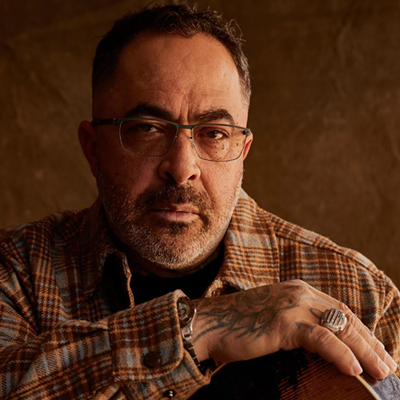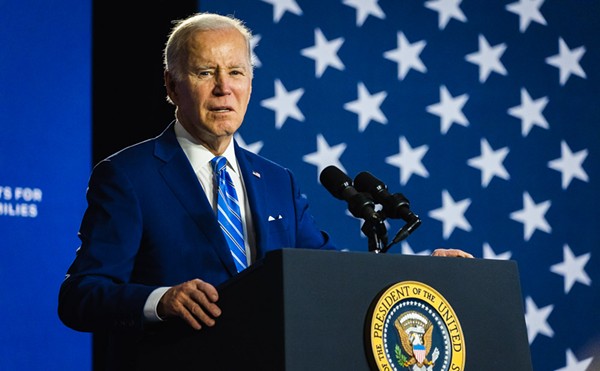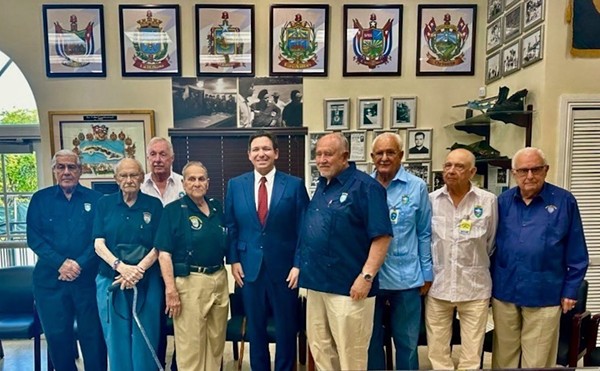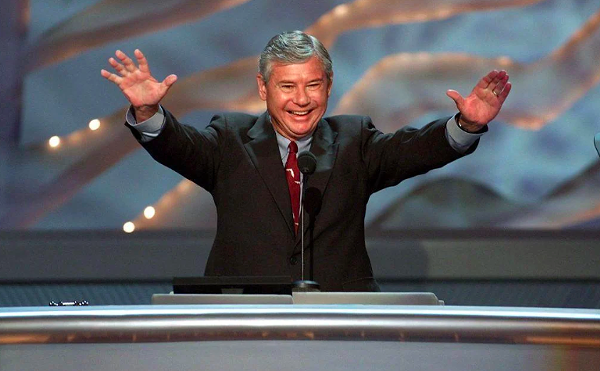"And it goes something like this..."
Believe it or not, some actors still use that line as a lead-in when they're about to launch into their audition monologues, says David Jenkins, artistic director of Jobsite Theater. Even worse, he says, are the ones who announce that they've finished, as if concluding an improv: "And... scene."
But pity the poor actor. Auditioning is a minefield, fraught with opportunities to embarrass oneself. As Hat Trick Theatre artistic director Joe Winskye acknowledged recently to the hopefuls who had assembled for his company's 2006-2007 tryouts: "We know what we're asking you to do is shitty."
Todd Olson, producing artistic director of American Stage, sums up the sad facts of the matter: "Actors are faced with rejection more than any other profession. With every audition they start at the beginning."
Still, even with the terrible odds and the psychological pressures and the sheer awkwardness of it all, auditioning is a necessary evil.
"It's a clumsy simulation at best," says Olson. "But that's how we do it. I need to know what you sound like, how your body moves in space, what kinds of interpretive choices you can make, a sense of your range, and I can get that in one to two minutes."
And bottom line, the director's not just seeing whether you can act or not; he's also deciding whether he wants to hang around with you every night.
"You have an additional character you play when you go into the room," says Jenkins, whose company held its general auditions earlier this week. "And that's yourself."
"The first thing and the last thing that I think of," says Winskye, "is [whether] this is going to be an enjoyable rehearsal process. You have to live in each other's pockets for six weeks."
Having once cast a couple that broke up halfway through a production, he knows whereof he speaks: "That was the longest three weeks of my life."
On a rainy Saturday in Hat Trick's tiny gallery-turned-theater-space in Ybor City, no such domestic dramas seem to be lurking. Winskye has called back a small group of actors to read for two plays: How I Learned to Drive, the Pulitzer Prize-winning drama about a young woman's relationship with her way-too-affectionate uncle, and Line, Israel Horovitz's absurdist comedy about people struggling to get to the front of a line.
Winskye already knows how he's casting the leads, but there are still important ensemble roles to fill. And because there are more women here today than men — roughly six to two — women will be reading men's roles even if there's no chance they'll be playing them.
Winskye keeps things light, mocking himself for being disorganized and chatting with each auditioner. But nerves are evident, and flubs inevitable. One actor arrives late, grinning sheepishly; another fumbles irritatedly with her script as she tries to find the right passage to read; another pushes too hard for laughs. But there are also sparks of invention — like the pretty young woman who throws herself into a sharp-edged, credible portrayal of an opinionated grandma.
Winskye likes to throw challenges at auditioners. In the generals he asked people to "do something amazing" and got some amazing results (backflips, a 30-second recitation of the U.S. presidents). Today he's having his actors tackle one of the trickiest passages in the Drive script: the flashback in which Uncle Peck first takes his niece Lil' Bit onto his lap as part of an uncomfortably intimate driving lesson.
To the actors' credit, no one shies away from the moment when Peck begins to move his hands over Lil' Bit's torso; everyone accepts the risk. But only one pair seems really to be talking and listening to each other: a Hat Trick member actor, who's on hand to help with the auditions, and the young woman who did so well as the grandma. (At press time, casting decisions had not yet been finalized, so we're holding off naming names so as not to get anyone's hopes up.)
Both Hat Trick and Jobsite revolve around a core group of actors who are guaranteed some measure of participation each season. American Stage operates according to a contract that requires casting to be 60 percent Actor's Equity, leaving the rest of the roles to be filled by non-union performers. But the artistic directors of all three companies are adamant that casting opportunities for local actors are still plentiful.
"Despite rumor mills, nothing is precast," wrote Olson this year in a note to auditioners attending an open call. "No offers have been made nor contracts signed ... Right now you have as much shot at getting cast as anyone does.'"
David Jenkins says Jobsite is equally open to new talent: "People start to get the opinion that this company only casts [certain] people. By and large I find that not to be true. What it really takes is for someone to come into an audition and smoke it."
And that's happened more than once. Meg Heimstead made such a strong impression in trying out for a role in the 2004-2005 season that when the company needed someone to step into the female lead of last year's March of the Kitefliers, it thought of her (she'll be reprising her role next spring). Ward Smith walked into the 2005 general auditions and won key roles in The Goat and We Won't Pay! We Won't Pay!
What many actors don't realize when they walk into an audition is that directors want to be blown away. "They don't know that I am rooting for them," says Olson. "That I am under considerable pressure to find good people, so it's in both of our best interest that they knock it out of the park."
That being said, he acknowledges that when he divides up the resumes after an open call, the must-hire pile is always the smallest.
Artistic directors may be looking for talent, but they're also looking for balance and chemistry. They're looking to fill particular roles, but also keeping in mind how ensembles will work together over the course of a play, or even a season.
"The needs of the script become the first thing on your mind," says Jenkins. "People are either going to be right for that or they're not."
In other words, the outcome is to a large degree beyond the actor's control. All the more reason for actors to do their homework, memorize their lines — and then, in Olson's words, "embrace the game." Accept that the process is not just about ability but also numbers and types and who looks right with whom, and then approach the challenge with a playful spirit.
Kind of the way the young woman at Hat Trick's callbacks conducted herself. Pleasantly unruffled when she wasn't onstage, fully committed when she hit the script, she was clearly embracing the game.
A few days after the audition, her name is the first one that comes up when Winskye is asked who impressed him the most. He said before the callbacks that he was looking for actors with a willingness to "make bold choices and challenge themselves." She seemed to fit the bill.
And Jamie, I know I'm not supposed to mention any names, but if it were up to me you'd get cast in a minute.
Fall Arts 2006: Choose Me
- Intro
- choose me: tampa museum of art
- choose me: theater life
- choose me: the tampa review
- choose me: griz collective
- A Revolving Door
- choose me: the florida orchestra
- Keeping Tabs
What to Watch For
















